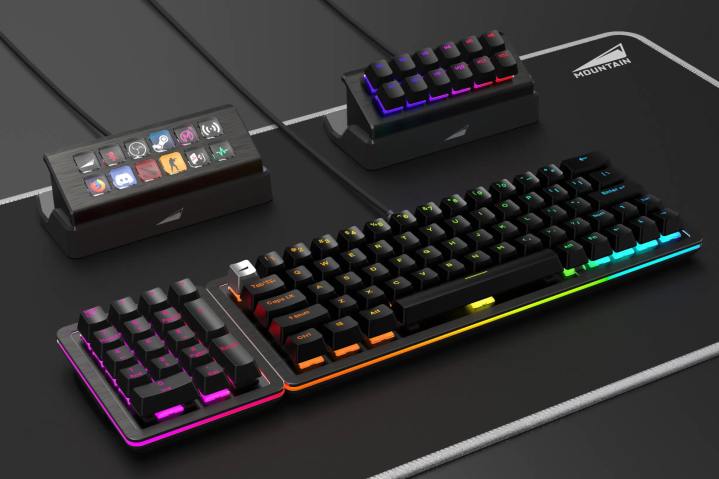Mountain just released two intriguing accessories that could take your streaming content creation and gaming to the next level. The DisplayPad is a customizable keyboard with 12 display keys. the MacroPad is an RGB mechanical keyboard with 12 keys. Each comes with an angled base that tilts the keys for easy access when placed at the top of your keyboard. These new keypad accessories expand the number of dedicated function keys available to streamline your workflow.

Each key on Mountain’s DisplayPad can be customized to show any icon, symbol, or graphic you’d like to help identify the function or macro. This isn’t just a touchscreen, like Apple’s Touch Bar. The keys are raised so they click and travel when pressed. You can even add a folder to a key so when you tap it, the display keys change to show up to 11 new functions, along with a back button.
With folder keys, the number of functions possible is infinite. Using folder keys requires multiple taps, but unlike keyboard combinations, you don’t need to memorize what Ctrl+Alt+Shift+E does in Photoshop. You can assign the shortcut that creates a new layer to a top-level display key with a matching icon or make a folder key that would show 11 layer functions when pressed.

Mountain’s MacroPad is a bit more traditional, offering 12 mechanical function keys in a six-by-two horizontal strip. As with the DisplayPad, the keypad can be placed at the top and angled, at the side, or even at the bottom to suit your preference.
These new content-creation accessory pads are fully programmable with Mountain’s Base Camp software that handles key bindings, RGB illumination, and display configuration.
The DisplayPad ($110) and MacroPad ($60) can be ordered now from Mountain’s website and are compatible with Mountain’s well-rated Everest Max and Everest Core RGB keyboards.



